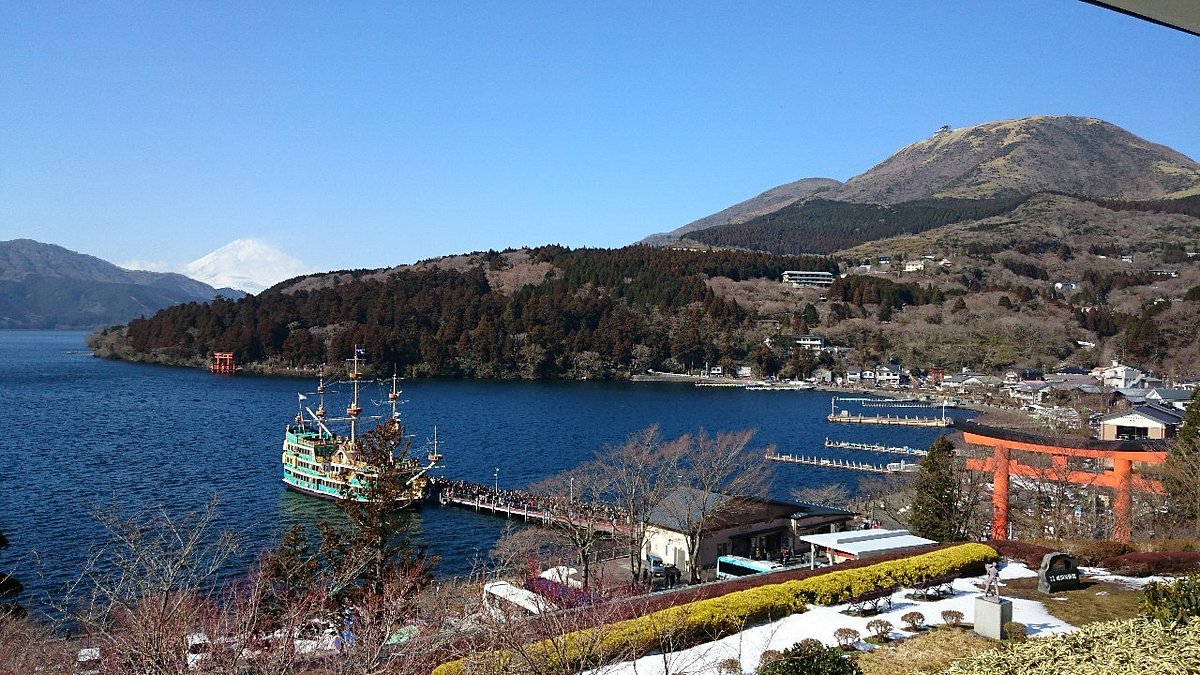Introduction
The Narukawa Art Museum (成川美術館, Narukawa Bijutsukan) is a contemporary art museum dedicated to showcasing nihonga, or Japanese-style painting. Nestled on the shores of Lake Ashinoko in Hakone, this museum not only houses an impressive collection of Japanese artworks but also offers one of the best panoramic views of Mount Fuji and Lake Ashinoko. Whether you’re an art enthusiast or a landscape photographer, the Narukawa Art Museum promises an unforgettable experience.
Key Information
- Location: Moto-Hakone, Hakone
- Main Exhibits: Nihonga (Japanese-style paintings)
- Highlight: Panorama lounge with views of Mt. Fuji and Lake Ashinoko
- Ideal for: Art lovers, photography enthusiasts, seekers of serene experiences
Historical Background
The Narukawa Art Museum was established in the latter part of the 20th century with the aim of preserving and promoting traditional Japanese painting. Nihonga, literally meaning “Japanese-style painting,” adheres to traditional Japanese artistic conventions, techniques, tools, and materials. Originally intended to distinguish it from Western-style paintings, artists have since expanded the scope of nihonga to include Western techniques, enriching this unique art form.
Main Attractions
Japanese Painting Exhibition Hall
The core exhibition area of the Narukawa Art Museum showcases a vast collection of carefully selected nihonga works. Here, you can admire Japanese paintings ranging from traditional styles to modern interpretations. The exhibits cover works from different periods and schools, allowing visitors to comprehensively understand the development and artistic characteristics of nihonga.
The artworks on display cover a wide range of themes, from natural landscapes to portraits, and even abstract concept expressions. Each piece reflects the unique aesthetic principles and techniques of nihonga. The delicate brushstrokes, soft colors, and exquisite compositions all exemplify the essence of Japanese painting.
The museum regularly rotates its exhibits, ensuring that frequent visitors can appreciate new artworks with each visit. Additionally, special exhibitions are held periodically, focusing on renowned artists or specific artistic themes, providing visitors with opportunities to delve deeper into the art of nihonga.
Panorama Lounge
One of the most striking features of the Narukawa Art Museum is its grand panorama lounge. Equipped with spacious floor-to-ceiling windows, it offers visitors an unparalleled vantage point to admire the full view of Lake Ashinoko and Mount Fuji. On clear days, you can clearly see the majestic silhouette of Mount Fuji and its reflection on the lake’s surface.
The panorama lounge is not only a great place to appreciate natural beauty but also a paradise for photography enthusiasts. Whether capturing the magnificent sunrise or the vibrant colors of sunset, this spot provides the best angles for your shots. As seasons change, the lounge presents different beautiful scenes: cherry blossoms in spring, lush greenery in summer, red leaves in autumn, and snow-capped mountains in winter, each season with its unique charm.
The lounge also features comfortable seating areas and a café, allowing guests to enjoy a cup of aromatic coffee or matcha while taking in the breathtaking views. It has become an ideal place for many visitors to relax and share beautiful moments with friends, away from the hustle and bustle of daily life.
Best Time to Visit
The Narukawa Art Museum is open year-round, but the best time to visit depends on your interests and purposes:
- Spring (March to May): Cherry blossoms in full bloom, pleasant scenery
- Autumn (September to November): Fall foliage season, picturesque landscapes
- Winter (December to February): Clear days offer views of snow-capped Mount Fuji
- Avoid peak crowds during Golden Week (late April to early May) and New Year holidays (late December to early January)
Getting There
The Narukawa Art Museum is conveniently located in the Moto-Hakone area on the southern shore of Lake Ashinoko:
From Hakone-Yumoto Station:
- Take the Hakone Tozan Bus to “Moto-Hakone Port” station (about 50 minutes)
- Walk about 2 minutes from the bus stop to reach the museum
From Gora Station:
- Take the Hakone Ropeway to Togendai Station
- From Togendai, take a sightseeing cruise to Moto-Hakone Port
- Walk about 2 minutes from the port to reach the museum
By Car:
- From Tokyo direction, take the Tomei Expressway to Gotemba IC
- Then drive towards Hakone for about 40 minutes
Hours and Admission
- Open Hours: Daily from 9:00 AM to 5:00 PM (No closing days)
- Admission Fees:
- Adults: 1500 yen
- With Hakone Free Pass: 1300 yen
- Special exhibitions may require additional fees
Visitor Tips
- Check the weather forecast and choose a clear day for the best views of Mount Fuji
- Allow at least 2-3 hours for your visit
- Photography is prohibited inside the exhibition halls; please respect copyright rules
- Seating in the café is limited; arrive early to secure the best viewing spots
- Wear comfortable shoes as there will be a fair amount of walking during your visit
- Consider purchasing the Hakone Free Pass for discounted admission and convenient travel around the area
Official Website
Conclusion
The Narukawa Art Museum is not just an art sanctuary but also a prime spot to appreciate the natural beauty of Hakone. Whether you’re an art lover, a photography enthusiast, or simply a traveler seeking a tranquil experience, this place will meet your expectations. Visit the Narukawa Art Museum to immerse yourself in the charm of traditional Japanese art while being surrounded by breathtaking natural landscapes. This unique experience will surely become one of the most memorable parts of your Hakone journey. Don’t miss this opportunity – plan your visit to the Narukawa Art Museum today!
photo by sakurako15
